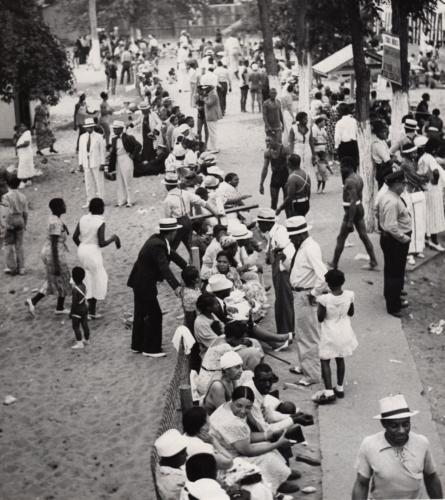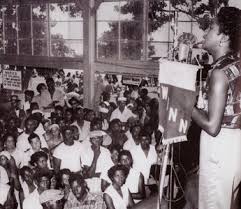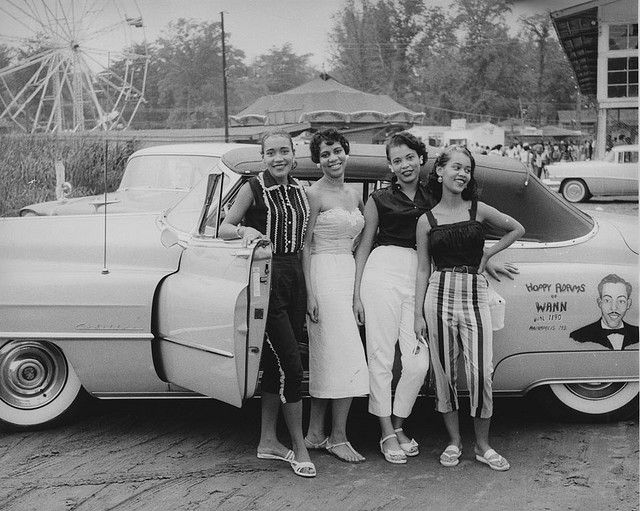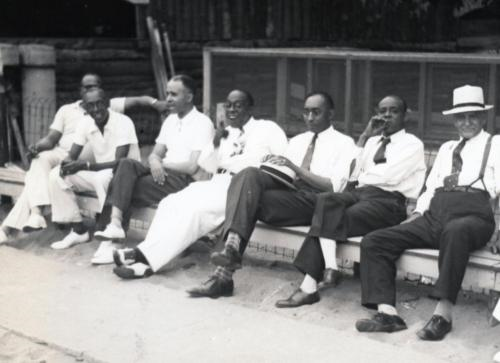Before Blacks Could Visit Ocean City or Atlantic City beaches, there was Carr’s and Sparrow’s Beaches near Annapolis, Maryland
By Timothy Cox for Atlanta Daily World
During the Jim Crow era post 1940, a large number of recreational water locales, including the popular Ocean City, Maryland, Atlantic City, N.J. and Virginia Beach, Va. were unavailable to African-American vacationers.
Segregation-era laws formidable in Southern states jetted its ugly heads just south of the Mason-Dixon Line and legally prohibited blacks from enjoying the fruits of summertime fun in the sun – even in Central Maryland near Baltimore.
To counteract such despicable acts, African-American entrepreneurs often created businesses that solely catered to a black clientele or a black patronage.

In an effort to provide blacks with opportunities to enjoy summertime fun typically after long, cold Maryland winters – two sisters named Elizabeth Carr Smith and Florence Carr Sparrow, were bold enough to develop beach-front property that was originally owned by their parents – Frederick Carr and Mary Wells Carr.
According to published reports, the couple purchased 180 acres of farmland on the Annapolis Neck Peninsula, off the Chesapeake Bay and Severn River. Although farmers, the family also hosted family picnics and church outings and invited boarders to participate in summer outings on their water-based property.
By 1926, the family had officially named the water location Carr’s Beach and a nearby ocean-side property was named Sparrow’s Beach.
By the late 1940s, Carr’s Beach had earned a growing reputation as one of the most popular beach spots on the East Coast. Black vacationers from as far west as Ohio and West Virginia, found themselves frolicking with revelers from New York State, Pennsylvania and of course nearby Baltimore and Washington, DC.
While the weekdays attracted family-life picnics, Sunday School and church picnics, on weekends, some of the premier black entertainers from the so-called “Chitlin Circuit” found themselves entertaining thousands of appreciative patrons — entertaining blacks who were starved to see top-notch performers such as Billie Holliday, Count Basie, James Brown, Ray Charles and the Raelettes, Wilson Pickett, Otis Redding, Little Richard, Esther Phillips, The Orioles and Frankie Lymon and The Teenagers.

Popular Annapolis area radio disc jockey, Charles “Hoppy” Adamstation WVANN, spearheaded the music scene and ensured that premier entertainment consistently pervaded “The Beach” soundstage.

Two Baltimore area gentlemen were youngsters when their parents would drive them from West Baltimore to partake in picnics and overall good summer fun.
Mike Lee, 68, recalls being in elementary school when he first visited Carr’s Beach.
“I was aware that we weren’t welcome to places like Ocean City,” said Mr. Lee. “So Carr’s and Sparrow beaches offered us a safe-haven, a place where we could do what we wanted to do, and not have anyone looking over us – like law enforcement.
“It was a very free environment, and that’s the best way to put it,” said Mr. Lee – who graduated from Morgan State with a psychology degree. Before going to college he ran track and excelled in academics at Baltimore City College High School, Class of 1970.
Mr. Lee’s high school classmate, Robert Ford, 67, also has fond memories of visiting “The Beach” as a youngster.
“Carr’s Beach was a summertime location where everyone wanted to go to experience the beach; but due to the activities below the Mason-Dixon Line, we were faced with Jim Crowism and segregation — where we could not go everywhere, including Ocean City (beach).

“To this day, I have never gone to Ocean City,” claims Mr. Ford. “It’s just something about not being allowed to go back then, I guess that’s lingered with me even now,” he said.
“We had Carr’s Beach and Sparrow’s Beach. Both were black-owned and we felt comfortable going to both of those places,” he said.
Mr. Ford studied broadcast journalism at Washington and Lee University in Lexington, Va. As one of just 15 black students of about 2,000 total enrollment, Mr. Ford said he was forced to make major life’s adjustments as a black student coming from an urban environment.
At Washington & Lee, he helped found the SABU, Student Association of Black Unity. He also earned his bachelor’s degree and ultimately started working at TV Channel 13 in Baltimore.
He also helped form the radio station at Morgan State, WBJC, where he worked as operations director and jazz director.
Although he’s a Pittsburgh native, Darryl Dunn, 73, was first introduced to Carr’s Beach by a former girlfriend who’s father had business partners who often frequented “the Beach.”
“It’s been several years, but I still recall the first time I heard about Carr’s Beach. She invited me down to go see James Brown perform. I couldn’t believe my eyes.
“In Pittsburgh, we never had such a water-front beach presence – so to see thousands of black people having so much fun in bathing suits, and
picnicking and just having a flat-out ball — I knew it was something unique, and now I realize I was part of Black History,” he added.
Mr. Dunn is a retiree of Westinghouse Electric Corp., Pittsburgh and a Black Music Historian.
According to published reports, on the evening of July 21, 1956, an estimated 70,000 people traveled to Carr’s Beach to hear rock ‘n roll founder/guitarist Chuck Berry perform although only 8,000 made it past the gates because the grounds were filled beyond capacity.
By the early 1960s, integration and the Civil Rights Movement had diminished Jim Crowism and also the popularity of Carr’s-Sparrow’s Beaches as a predominately-black inhabited recreation vicinity.
It’s been stated that a 1962 performance by James Brown drew 11,000 fans, and also marked the last of the major crowds drawn to the area, which is located near Annapolis, Maryland – off the Chesapeake Bay and Severn Rivers.
Both Carr’s Beach and Sparrow’s Beach are now mostly populated with owners of high-priced condominiums of which most of the property are white-owned. Hence, the end of an unforgettable era in Black History.